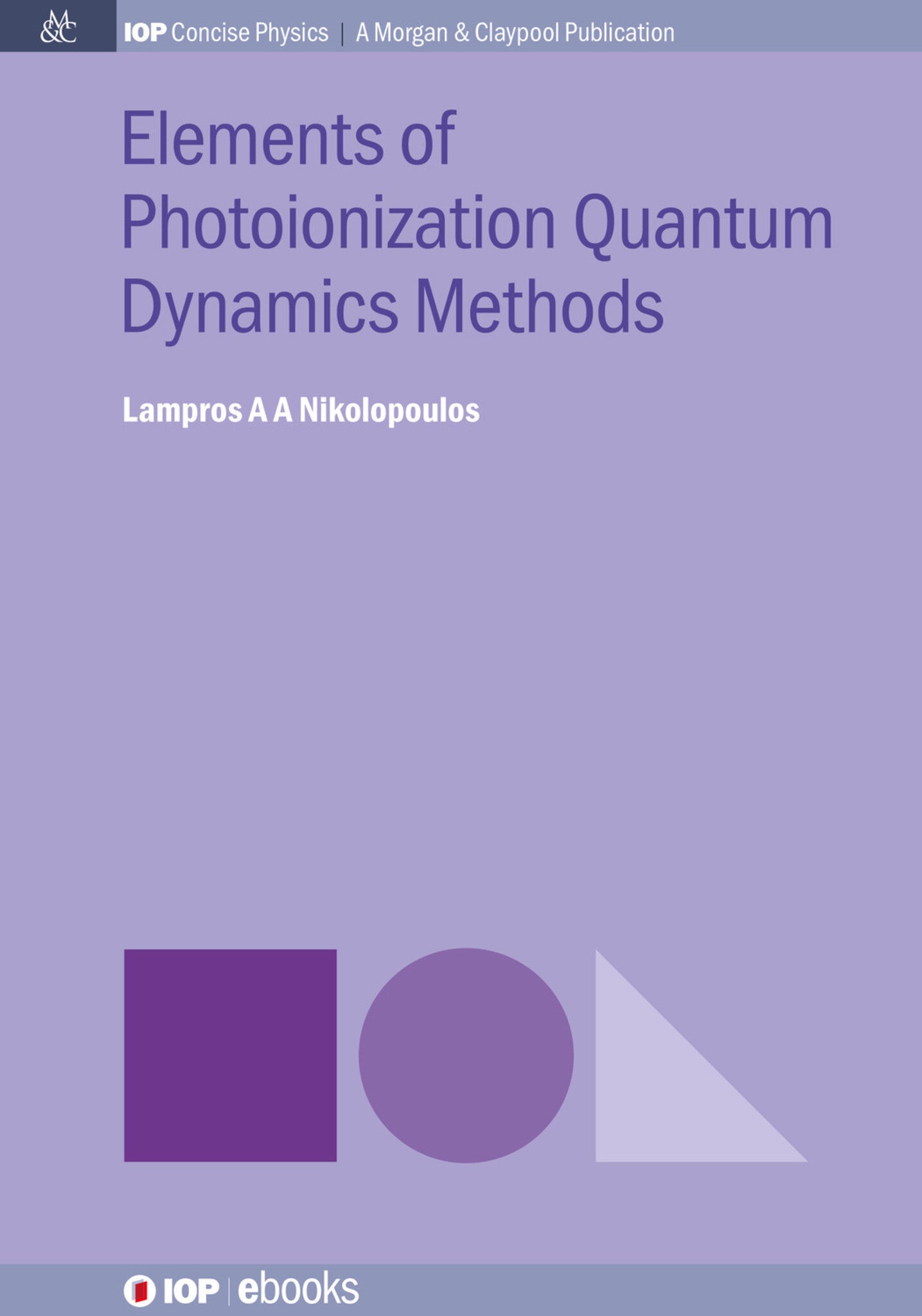We're sorry. An error has occurred
Please cancel or retry.
Elements of Photoionization Quantum Dynamics Methods

Some error occured while loading the Quick View. Please close the Quick View and try reloading the page.
Couldn't load pickup availability
- Format:
-
22 March 2019

Elements of Photoionization Quantum Dynamics Methods focuses on the RMT approach to multiphoton quantum dynamics, which is employed to tackle the problem of laser-induced atomic dynamics. This recently developed formulation has shown the potential to become a mainstream ab initio theoretical approach, which is capable of describing the quantum dynamics of multielectron quantum systems exposed in ultrashort intense laser pulses lasting at the femtosecond timescale (∼10−18 sec). The method itself builds on the division-of-space concept and has evolved as an extension of the well-established atomic R-matrix method to incorporate time in its formulation. It is this way that its name was inherited, R-matrix with time incorporation (RMT), although no R-matrix appears anywhere in the formulation.

SCIENCE / Physics / Quantum Theory, Quantum physics (quantum mechanics and quantum field theory), SCIENCE / Physics / Electricity, SCIENCE / Physics / Atomic & Molecular, Electricity, electromagnetism and magnetism, Atomic and molecular physics

I Basics on ab-initio quantum dynamics
1 Introduction
1.1 The theoretical minimum
1.2 Laser-atom quantum dynamics methods
2 Hilbert-space dynamics
2.1 Time-development
2.2 TDSE on the position representation
2.3 TDSE in the energy representation
3 Hilbert space rotations
3.1 Introduction
3.2 Central Hamiltonian
3.3 Angular momentum representation
3.3.1 Laplace operator
3.3.2 Dipole operators
3.3.3 Molecular diatomic potential
II One-electron atomic systems in laser fields
4 Radial SE of the atomic & molecular hydrogen
4.1 Atomic hydrogen radial SE
4.2 Molecular diatomic
4.2.1 Dipole matrix elements
5 SE on a finite basis
5.1 The TD wavefunction in a finite region
5.2 Finite basis expansion
5.2.1 Fixed boundary conditions
5.2.2 Free boundary conditions
5.3 Molecular hydrogen ion
5.4 Appendix: Normalization of the continuum states
6 Laser pulses
6.1 Radiation gauge
6.2 Laser beams in the paraxial approximation
6.2.1 Fourier-limited pulses
7 TDSE
7.1 Hamiltonian
7.2 TDSE of atomic hydrogen
7.2.1 Energy-angular momentum basis
7.2.2 TDSE on the angular momentum basis
7.3 TDSE of the molecular hydrogen ion
7.3.1 Energy-angular momentum basis
7.3.2 Angular momentum basis
7.4 TDSEs matrix notation
7.4.1 Initial state calculation-diffusion equation
8 TDSE post-processing
8.1 Preliminary
8.2 Bound state populations and ionization yield
8.2.1 Photoelectron Angular distribution (PAD)
8.2.2 High harmonic generation (HHG)
III The RMT division-of-space method
9 Division-of-space method
9.1 Introduction
9.2 RMT in 1-dimensional square well
9.3 TDSE in the inner region
9.3.1 Fixed boundary conditions (Green’s theorem)
9.3.2 Free-boundary conditions (Bloch-operator)
9.4 Outer-region, finite-difference approach
10 RMT in hydrogenic systems
10.1 Introduction
10.2 Inner and outer TDSE
10.3 The atomic case
10.4 Population and ionization yields
10.4.1 Bound state populations and ionization yield
Appendices
A Spherical harmonics and Glebsch-Gordan coefficients
A.1 Basic properties
A.2 Expansions on spherical harmonics
B Numerical approximations of operators
B.1 Spatial operators
B.1.1 Finite-differences
B.1.2 B-splines
B.2 Time-evolution operators
B.2.1 The Truncated Taylor Series Propagator
B.2.2 Runge-Kutta methods



